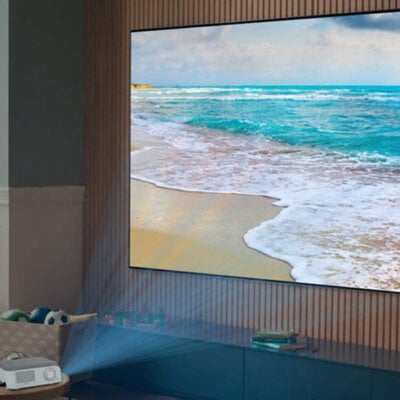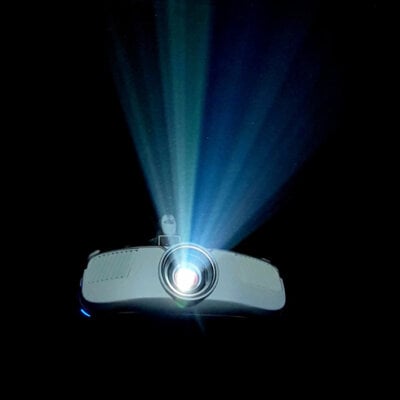
CVIA Lumens are measured in accordance with CVIA Brightness Standard, a new standard formulated by China Video Industry Association and leading projector producers, including Dangbei, XGIMI, JMGO, etc. In this guide, we will compare the CVIA Lumens and ANSI lumens.
CVIA Lumens vs ANSI Lumens
The ANSI Lumens are measured in accordance with American National Standards Institute standards, and CVIA Lumens are measured by China Video Industry Association Brightness Standards. Chinese leading projector brand Dangbei has taken the lead to label their products on the Chinese market with CVIA lumens to promote the healthy and orderly development of the projector industry.
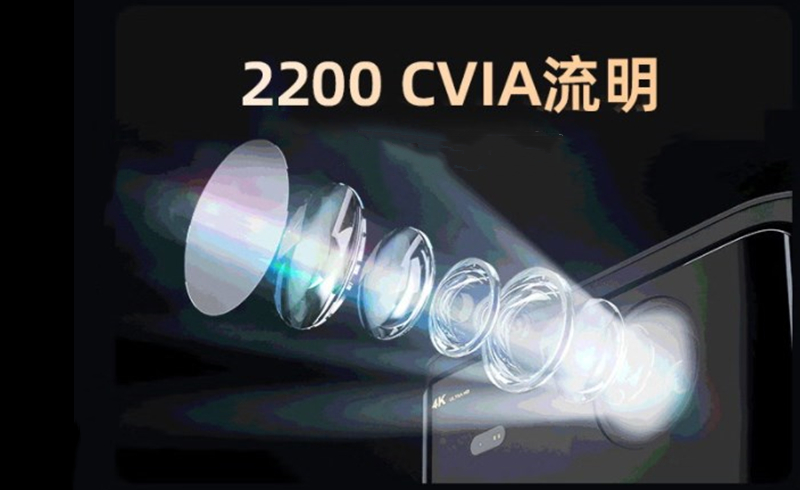
ANSI Lumens are well-recognized lumens unit in the US market, while CVIA Lumens are new measurement that is oriented for all smart projectors in the Chinese market.
Compared with ANSI Lumens, CVIA Lumens are stricter in terms of color temperatures and color coordinates. In addition, the CVIA brightness standard has requirements for brightness labels of mass-production projectors on the market.
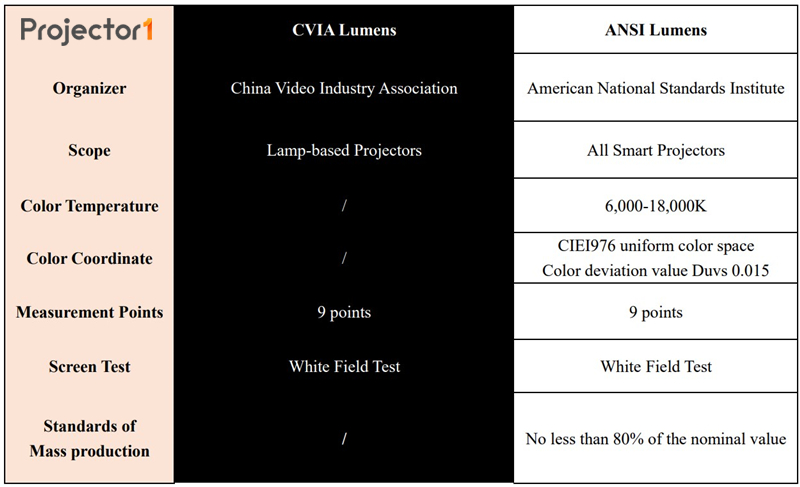
Besides, the CVIA brightness standard has requirements in terms of the projector’s working condition during the brightness test.
According to the public data from Dangbei, provided the projector is the same, the CVIA lumens value is nearly the half of ANSI lumens value.

CVIA Brightness Measurement Method
Here is the measurement method for CVIA brightness.
Preparation Phase:
Step 1: Input a test signal in the same format as the projector’s resolution.
Step 2: The projector should be initialized or reset to the factory default state. If there is no reset option, the projector’s power-on state is viewed as the default operating state,
Step 3: Turn off keystone correction, while eliminating keystone distortion by adjusting the mechanical position of the product with a projection screen size of 80″. Turn off the brightness adaptive intelligent screen correction function.
Step 4: If the input signal is readjusted or replaced during the measurement process, the projector should be made to work steadily for at least 5min and then measured.
Step 5: The audio channel is not connected to the audio signal. If there is an audio output volume adjustment, place it in the minimum position.
Step 6: The projector’s standard operating state, the white field color temperature shall comply with the CCT color temperature between 6,000 K-10,000K.
Step 7: This state is the standard operating state and should remain unchanged throughout the measurement process. The relevant setting and projector state should be recorded in the test log.
Step 8: When the smart projector is tested, turn off other functions other than projection.
Measurement Phase
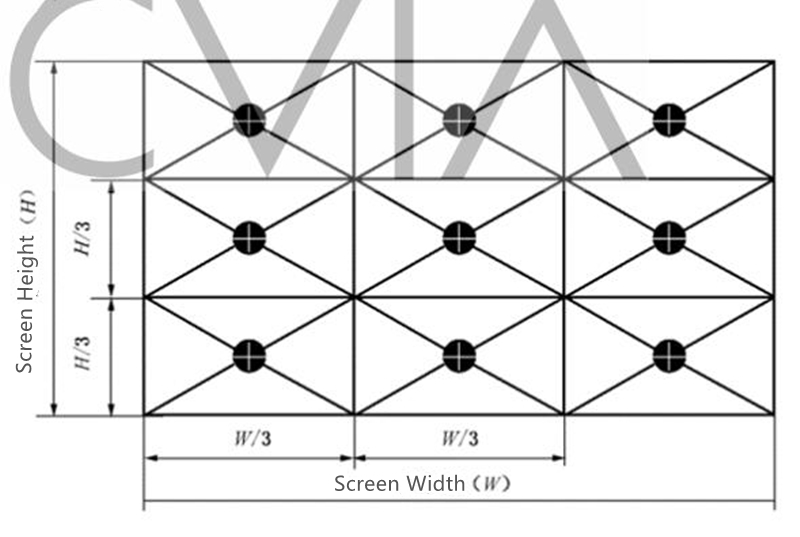
Step 9: Input the all-white field signal and measure the correlated color temperature (CCT) and color deviation value Duv at the center point of the projection surface with a colorimeter, with the center point being point P5 of the uniformity test point location map.
Results Evaluation Phase
The relevant color temperature must be between 6,000K and 10,000 K.
The color deviation value Duv should not exceed 0.015.
Related Posts


